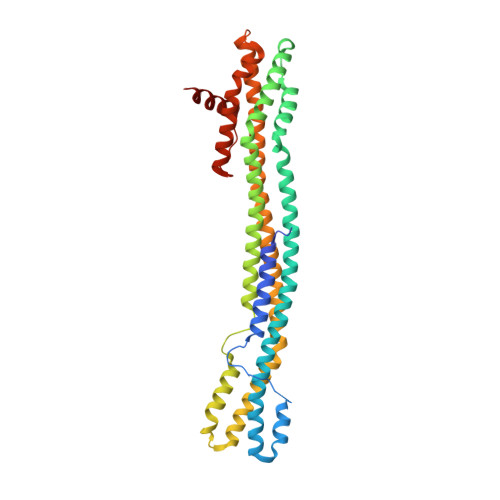Controlled crystal dehydration triggers a space-group switch and shapes the tertiary structure of cytomegalovirus immediate-early 1 (IE1) protein.
Klingl, S., Scherer, M., Stamminger, T., Muller, Y.A.(2015) Acta Crystallogr D Biol Crystallogr 71: 1493-1504
- PubMed: 26143921
- DOI: https://doi.org/10.1107/S1399004715008792
- Primary Citation of Related Structures:
4WIC - PubMed Abstract:
Cytomegalovirus immediate-early 1 (IE1) protein is a key viral effector protein that reprograms host cells. Controlled dehydration experiments with IE1 crystals not only extended their diffraction limit from 2.85 to 2.3 Å resolution but also triggered a monoclinic to tetragonal space-group transition with only minor alterations in the unit-cell parameters. An analysis of the pre-dehydration and post-dehydration crystal structures shows how dehydration rearranges the packing of IE1 molecules to meet the unit-cell constraints of the higher lattice symmetry. The transition from P21 to P43 reduces the number of copies in the asymmetric unit from four to two, and molecules previously related by noncrystallographic symmetry merge into identical crystallographic copies in the tetragonal space group. At the same time, dehydration considerably alters the tertiary structure of one of the two remaining IE1 chains in the asymmetric unit. It appears that this conformational switch is required to compensate for a transition that is assumed to be unfavourable, namely from a highly preferred to a rarely observed space group. At the same time, the dehydration-triggered molecular reshaping could reveal an inherent molecular flexibility that possibly informs on the biological function of IE1, namely on its binding to target proteins from the host cell.
Organizational Affiliation:
Division of Biotechnology, Department of Biology, Friedrich-Alexander University Erlangen-Nuremberg, Henkestrasse 91, 91052 Erlangen, Germany.














